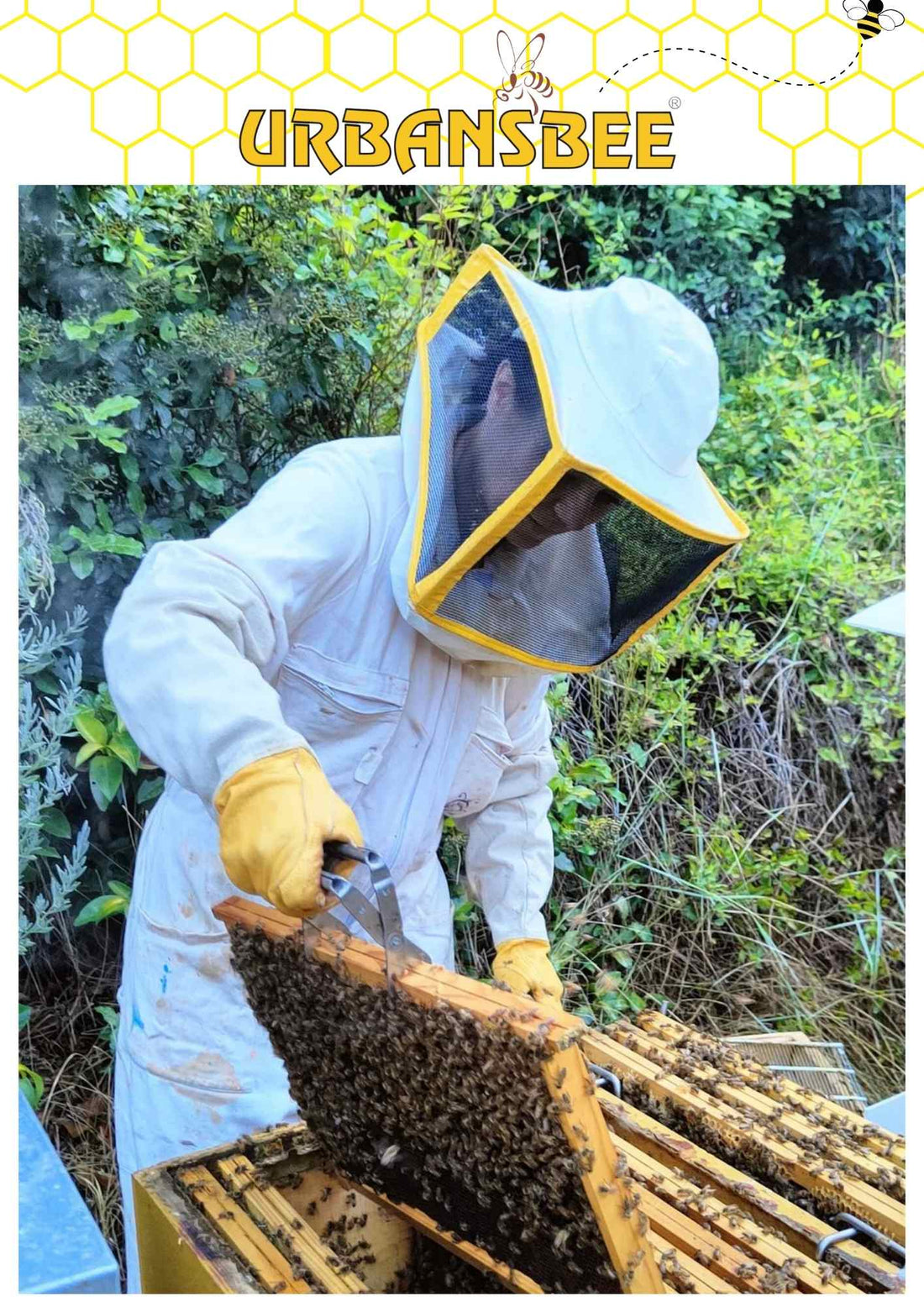Beekeeping for Beginners: Top 10 Must-Know Tips for a Buzzing Start
Beekeeping for Beginners: Top 10 Must-Know Tips for a Buzzing Start
Brief History of Beekeeping
Beekeeping is as old as civilization itself. Historical records from ancient Egypt depict beekeepers using smoke to calm bees as early as 2400 BCE. The practice continued to evolve through medieval Europe, where monks tended hives in monastery gardens, to the modern era where urban rooftops and suburban backyards host buzzing colonies.
With modern tools and growing ecological awareness, beekeeping has become more accessible than ever—no longer limited to the countryside.
Why Beekeeping Is Gaining Popularity
Beekeeping is undergoing a global revival. Here's why:
-
🐝 Pollinator Crisis: The decline of bees due to pesticides and habitat loss has sparked grassroots movements to protect pollinators.
-
🌿 Eco-Conscious Living: More people are choosing sustainable hobbies that give back to the planet.
-
💸 Affordable Start-Up Costs: Thanks to sites like urbansbee.com, complete beginner kits are budget-friendly and convenient.
Benefits of Beekeeping
Beekeeping goes beyond honey. Let’s break down the rewards:
Environmental Importance
Bees pollinate over 70% of the crops we eat. A healthy hive supports your local ecosystem, helping fruits, vegetables, and flowers thrive.
Health & Honey Benefits
-
Raw honey is packed with antioxidants, enzymes, and antibacterial compounds.
-
Beeswax and propolis are used in natural skin care, candles, and immune-support remedies.
Financial Incentives
While many start beekeeping as a hobby, it can grow into a profitable side hustle:
-
Sell raw honey, candles, or lip balm.
-
Offer hive hosting services.
-
Start a bee-related blog or workshop series.
Is Beekeeping Right for You?
Before you dive in, assess your lifestyle and environment.
Time Commitment
Plan to spend 30–60 minutes per hive each week. Most work occurs during spring and summer.
Space Requirements
Even a small urban balcony or rooftop can accommodate a hive. Just ensure:
-
Adequate sun exposure
-
Access to water
-
Compliance with local ordinances
Common Misconceptions
| Myth | Fact |
|---|---|
| Bees are aggressive | Honey bees are calm and only sting when threatened |
| It’s too difficult to learn | With online support and kits from urbansbee.com, anyone can do it |
| You need a large backyard | Even apartment dwellers can manage hives on rooftops or decks |
Essential Beekeeping Terminology
Learning the lingo makes everything easier:
-
Queen Bee: The hive’s mother—she lays up to 2,000 eggs a day.
-
Drone: Male bees whose sole purpose is to mate with queens.
-
Worker Bee: Female bees that gather nectar, care for brood, and guard the hive.
-
Brood: Developing bees in egg, larval, or pupal stages.
-
Comb: Wax structures where bees store honey and raise their young.
Setting Up Your First Hive
Choosing the Right Location
Look for:
-
Morning sun exposure (activates the hive early)
-
Shelter from wind
-
Low foot traffic
-
Nearby water source
Hive Types Explained
| Hive Type | Description |
|---|---|
| Langstroth | Stackable, box-style hives—great for beginners |
| Top-Bar | Horizontal frames—less intrusive, ideal for warmer climates |
| Warre | Vertical, naturalistic hive for low-maintenance beekeeping |
Number of Hives to Start With
Starting with two hives is ideal. It allows comparisons if one hive falters and makes balancing resources easier.
Equipment Checklist
A successful beekeeper starts with the right tools. Here’s what you’ll need:
Protective Gear
-
Bee suit or jacket with veil
-
Leather or nitrile gloves
-
Rubber boots
Hive Tools
-
Smoker: Calms bees with cool smoke
-
Hive Tool: Pries open sticky boxes and frames
-
Bee Brush: Gently moves bees off frames
🛒 Shop complete beginner kits at urbansbee.com to get everything in one bundle.
Where to Buy Your Bees
Types of Bees for Beginners
-
Italian Bees: Gentle, productive, easy to manage
-
Carniolan Bees: Adaptable, calm, and good in colder regions
Packages vs. Nucs vs. Swarms
| Type | Details |
|---|---|
| Package | Bees + queen shipped in a screened box |
| Nucleus (Nuc) | Mini hive with 4–5 frames of bees, comb, and brood |
| Swarm | Wild-caught bees—challenging and not beginner-friendly |
Order bees early in the year, preferably by February or March.
Installing Your Bees
Here’s how to install your package or nuc:
-
Spray lightly with sugar water (to calm them).
-
Gently shake bees into the hive body.
-
Hang or place the queen cage between frames.
-
Close the hive and let them settle for 3–5 days.
-
Inspect to confirm queen release and egg laying.
Seasonal Beekeeping Tasks
| Season | Tasks |
|---|---|
| Spring | Feed sugar syrup, install bees, inspect for brood |
| Summer | Watch for swarms, add supers, harvest honey |
| Fall | Combine weak hives, feed for winter, treat for mites |
| Winter | Insulate hives, reduce entrances, provide emergency feed (fondant) |
Feeding Your Bees
Sometimes, nature needs a little help.
Feeding Options
-
Sugar Syrup: 1:1 in spring, 2:1 in fall
-
Pollen Patties: Stimulate early brood production
-
Fondant: Emergency winter feed when honey stores run low
Hive Inspections
Regular hive inspections are essential to ensure colony health and productivity.
How Often Should You Inspect?
-
Spring/Summer: Every 7–14 days
-
Fall: Every 2–3 weeks
-
Winter: Only when necessary (limit disruption)
What to Look For
-
Queen presence (eggs, brood, or queen spotted)
-
Healthy brood pattern
-
Adequate honey and pollen stores
-
Signs of pests (mites, beetles)
-
Swarm cells (indicate the colony may leave)
📝 Keep a logbook or use a mobile app to track inspections and changes.
Common Pests & Problems
Even the healthiest hive can face challenges. Here are the most common:
1. Varroa Mites
These tiny parasites weaken bees and transmit viruses. Use screened bottom boards, powdered sugar treatments, and mite-resistant bees. Consider natural treatments like oxalic acid vaporization.
2. Wax Moths
These pests chew through comb and wood. Prevent by:
-
Regularly inspecting and freezing unused frames
-
Keeping strong, healthy colonies
3. Small Hive Beetles
Beetles damage comb and honey. Use beetle traps, manage moisture, and maintain strong colonies.
4. Starvation
Occurs during nectar dearth or winter. Monitor stores and feed as needed.
🛡 Proactive care and consistent inspections are key to prevention.
Harvesting Honey
One of the sweetest rewards of beekeeping is your first honey harvest.
When to Harvest
-
Late summer or early fall
-
Once honey is capped (covered in white wax)
Tools You’ll Need
-
Uncapping knife or fork
-
Honey extractor (manual or electric)
-
Bottling bucket with strainer
How to Harvest
-
Remove capped frames from the hive.
-
Uncap cells with the knife.
-
Extract honey using the spinner.
-
Strain and bottle your liquid gold!
💡 Only harvest surplus honey—always leave enough for your bees to survive the winter.
Legal & Ethical Considerations
Before setting up your hive, do your homework.
Local Laws
-
Check zoning regulations, setback rules, and registration requirements in your area.
-
Some cities limit the number of hives or require water sources for bees.
Respecting Neighbors
-
Place hives away from property lines.
-
Use fencing to guide bee flight paths up and away.
-
Educate neighbors to reduce fear and foster understanding.
Ethical Practices
-
Avoid over-harvesting.
-
Use chemical-free treatments when possible.
-
Never take bees from the wild without proper training.
Community and Learning Resources
You’ll learn more, faster, by connecting with others.
Join the Hive-Minded Community
-
Beekeeping associations: Local clubs often offer classes and mentoring.
-
Online forums: r/beekeeping (Reddit), Beesource
-
Workshops and webinars: Check urbansbee.com for upcoming events.
Educational Resources
-
YouTube channels like “The Beekeeper’s Diary”
-
Books: Beekeeping for Dummies, The Backyard Beekeeper
-
Podcasts: Beekeeping Today, Pollination Podcast
Beekeeping Myths Debunked
Let’s clear up some common misconceptions:
| Myth | Truth |
|---|---|
| Beekeeping is too dangerous | With gear and training, it’s low-risk and calming |
| Bees make honey year-round | Most honey is made in spring and summer |
| You need a rural location | Urban beekeeping is thriving on rooftops and in community gardens |
| All bee stings are deadly | Reactions vary, and precautions help—carry an epipen if allergic |
| Beekeeping is expensive | Startup kits from urbansbee.com are affordable |
FAQs About Beekeeping for Beginners
1. How much does it cost to start beekeeping?
Expect to spend around $300–$500 for basic gear, bees, and a hive setup. Starter kits at urbansbee.com make it easy.
2. How much honey can one hive produce?
A healthy hive can yield 30–60 pounds of surplus honey in a good season.
3. Can I keep bees in a small yard or apartment?
Yes! Even balconies and rooftops work if properly managed. Always check your local regulations first.
4. How long does it take to harvest honey?
Typically, you can harvest in your first year, but most first-year hives are focused on building strength.
5. Are bees safe around pets and children?
Yes, when hives are placed thoughtfully. Bees rarely sting unless disturbed.
6. Do I need more than one hive?
Not necessarily, but two hives help with troubleshooting, resource sharing, and stability.
Conclusion: Start Buzzing Today
Beekeeping for beginners is a rewarding blend of science, sustainability, and sweet success. With the right tools, knowledge, and support from urbansbee.com, you’ll go from curious beginner to confident beekeeper in no time.
🐝 Ready to launch your hive?
Explore starter kits, online guides, and expert resources today at urbansbee.com—where modern beekeepers begin.






























